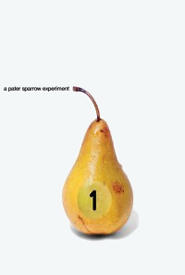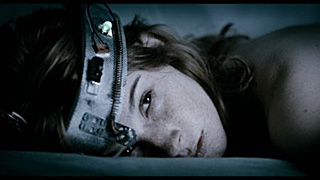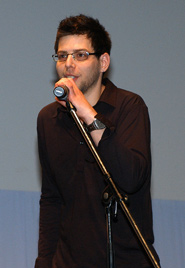 Cristina Favento (CF): Let’s start from the reading that inspired the movie: why Stanislav Lem and why that text (the script is taken from a collection called One Human Minute, ndr)[1] ?
Cristina Favento (CF): Let’s start from the reading that inspired the movie: why Stanislav Lem and why that text (the script is taken from a collection called One Human Minute, ndr)[1] ?
Peter Sparrow (PS): I coincidentally bumped into the short story when I was a teenager and, ever since, I was interested in how to visualize it. One of the very first sentence was that it was impossible to make a movie out of it, even though the whole context of the story is visually tensed. So I felt challenged by it.
CF: How did you built the script?
PS: First we had to figure out this storyline in its gradually ‘melting structure’ because I’m not using stories to tell, but to help the audience to come across my visual communication. For me, the story serves the picture and not other way around. I am usually creating a simmetric skeleton as a base and build my ideas just like musicians and painters do: very intuitively, freely and playfully, coming from the idea that “improvisation is the root of creation”. Therefore my script never wants to be ready but it must be continuable.
CF: This is your first movie, how did you come on directing? Where did you started and what’s your aim?
PS: Directing for me is not a science. I believe it is a communication between an individual person and others. I tried to be honest with my actors and my crew, and I feel that this is the only guarantee that my film will be able to be honest with the audience as well.
CF: Looking at the images, at the structure, the sounds… The impression is that, instead of a “cinematographic novel” structure, you used a kind of poetical language in your work, isn’t it?
PS: As I think, the original language is poem.
CF: What are for you the rules – if there is any – of filmmaking?
PS: That there are no rules.
CF: When you presented your movie in Trieste, you were speaking about “purposing and not telling to the people”, in order to make them live an experience. What do you mean?
PS: I don’t know. Probably I meant that I don’t like full-stop sentences in art, I prefer asking.

CF: It was interesting also your opinion about a movie like an artificial instrument that can’t be really clear. Can you please also explain better your concept about the ambiguous limits between full and empty, between what the people can understand and accept inside a cinema and what they cannot?
PS: People believe that they must understand, instead of believing that they can understand. I am the most attracted to what I don’t understand. My film always tries to convince my viewer to realize the he thinks in a way that no other person thinks, have ever thought, or will ever think.
CF: You were also complaining cause it doesn’t seem a popular choice, what are the difficulties in making movies today?
PS: If you don’t care about money, it’s hard to get it.
CF: Should there be a clear division between visual art and cinema in your opinion?
PS: No, on the contrary.
CF: Do you think this way to proceed is possible only in the science fiction or it was by chance that you chose this genre to start?
PS: I never considered my film as a sci-fi. It’s more about because of Stanislaw Lem.
CF: Are you going to proceed on this street or you have different ideas for the future?
PS: Very different.
 CF: Who are your models? You mentioned the Italian Neorealism, why? And who else had some influences in your works?
CF: Who are your models? You mentioned the Italian Neorealism, why? And who else had some influences in your works?
PS: I mentioned neorealism, more likely Fellini, because I think who couldn’t relate to him, has nothing to do with filmmaking. Anything or anyone can have an influence on me. Whichever can reveal something unseen, honestly.
CF: Is there any connection with the real world situation? Is, somehow, an aim of your movie to be critical about the reality or not at all?
PS: Absolutely there is a connection. If we are trying to be serious about ourselves the only position to be is the opposite side of what we call reality.

